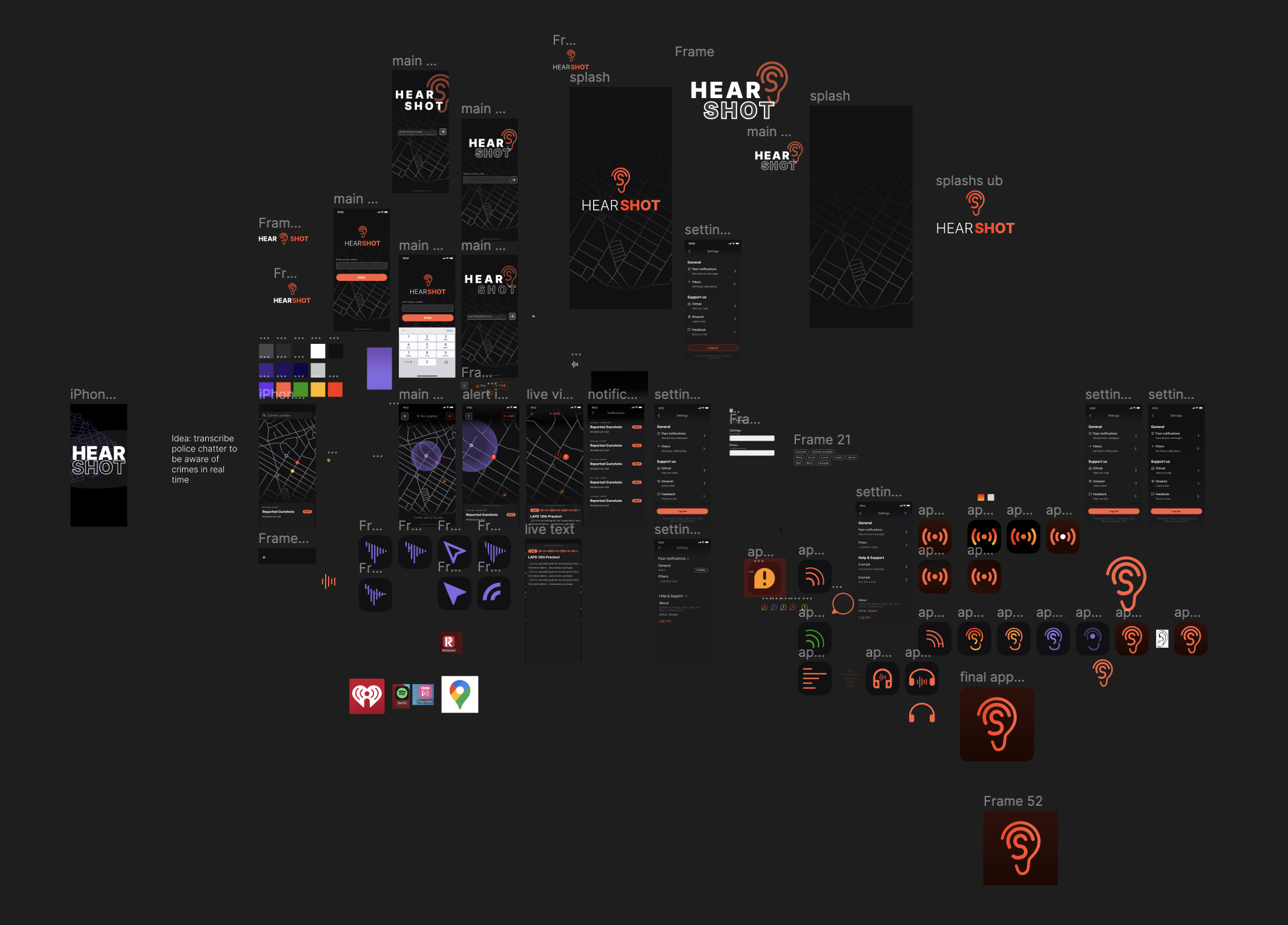LAHacks Finalist Presentation | Initial demo video | Devpost
 We tuned the antenna to the same frequency as these NERF handheld walkie-talkies for testing :)
We tuned the antenna to the same frequency as these NERF handheld walkie-talkies for testing :)
The inspiration came from a situation wherein one of our teammates unknowingly entered a mall undergoing lockdown due to gunshots. Though 911 had been called minutes before, no alerts showed up on Citizen or Twitter. This, on top of other incidents, made us realize the importance of having access to real-time information in such situations. With HearShot, we listen in on police dispatch radio transmissions and transcribe them into concise alerts to ensure that everyone is always aware of any potential safety threats nearby.
This is our first ever hardware hack! We wanted to build a receiver on our own because:
- low-latency is the priority (as faster = safer),and the online streams add extra latency on top of degrading quality
- the online streams are quite unreliable and go down often (maintained by hobbyists)
- it’s more fun :)
Hearshot listens to police radios to learn about incidents in real time and uses this information to notify users in the area. Users can see a transcription of the radio chatter to learn about what and where the event is. This helps people avoid dangerous incidents in realtime, without relying on user-generated content. In an emergency, safety is the priority; information from social media apps may not always be an option.
Because we intend on hosting this project for more than just this hackathon, this project had to be built with a very, very low monthly cost. Thus, we deployed to our own self-hosted hardware, as renting GPUs in this market is far too expensive for our broke college wallets.
Radio Receiver (Raspberry Pi 4 4gb)
- RTL SDR driver
- Liquid-DSP for FM demodulation
- Babycat for resampling + making the audio louder
- Send raw audio data to the transcriber via UDP
Broadcastify receiver
- This was a backup plan in case the radio fell through, but we managed to make the receiver work in the end. There’s still a lot of tuning and DSP work to make it work really well, but speech does come through.
A small GStreamer - This was used to read from an online MPEG stream of police radios, decode the data into raw audio samples, and forward them over UD.
Transcription Pipeline - Hosted on our own physical server rack at UMN with a 3080 and a 1080 for accelerated ML pipelines.
- |> Read raw audio samples over a UDP socket
- |> Feed them into a modified WhisperAI – whisper does NOT support live transcription, we built our own layer on top of Whisper to do live transcription directly from data samples
- |> We use Claude to identify locations in plain english, and then, with context, ping the Places API to get the exact coordinates for a relative location
- For example, this pipeline accurately locates human-readable places like “McDonalds on 4th” or “West and Grange” or even just “Pauley”
- |> Further extract and format, and read transcripts into Firestore.
- |> Identify “events” and associate chatter – on every new event, ping the NodeJS backend.
NodeJS Messaging Server - Hosted on the aforementioned physical server rack, but on a much lower-end vps.
- Hosts endpoints for keeping track of FCM tokens, and subscribes each to the relevant location-based alerts.
- Sends out push notifications when new events with “high” severity, or “fire” if it’s very close.
- We developed our frontend using React Native, creating custom components along the way (alerts, transcription, notifications, etc.).
- For authentication, we used phone numbers as login with Firebase Auth. Our very neat maps are implemented using custom styling on Google Maps.
- We spent many many hours designing! Shoutout to our mentor Michael for teaching me many many Figma hotkeys and tricks.

We had never touched radio before, and we didn't realize how low-quality radio signals actually were. Making any model work on such low quality audio was a HUGE challenge, not to mention the added challenge of doing it in real time. We also were trying to get GPUs in the cloud to practice (before we condensed it down to fit on a 3080) and we lost bids for on-demand pricing many times :)
Everything worked! We cut it really close but our whole pipeline was functional, and alerts were being sent out.
We're planning on tuning the antenna to the dispatch for the Minneapolis region and then publishing the app for the surrounding metro area first, and then rolling out two more antenna over the next few weeks.
flowchart TD
subgraph Police Scanner
rfrx[RTL-SDR Radio Receiver];
driver[RTL-SDR Driver];
dsp[Liquid-DSP];
dsp2[Babycat];
udp_police[UDP Socket];
rfrx -- USB --> driver;
driver -- I/Q samples of FM radio --> dsp;
dsp -- 230.4kHz raw audio samples --> dsp2;
dsp2 -- resampled 16kHz audio --> udp_police;
end;
subgraph Broadcastify Ingestion Service
bcast[Broadcastify];
gst[GStreamer pipeline in Rust];
udp_bcast[UDP Socket];
bcast -- Hobbyist-maintained stream of police chatter --> gst;
gst -- Conversion from an `application/x-icy` stream to 16xHz S16LE audio samples --> udp_bcast;
end;
subgraph a[Transcription Service];
udp_transcribe[UDP Socket];
whisper[OpenAI Whisper];
claude[Claude LLM];
firebase[Firebase];
udp_transcribe -- 16kHz raw audio, 16-bit signed integer samples --> whisper;
whisper -- transcribed audio --> claude;
claude -- post-processed events the user should know about --> firebase;
end;
udp_bcast --> udp_transcribe;
udp_police --> udp_transcribe;
ios[iOS App];
firebase-->ios;
